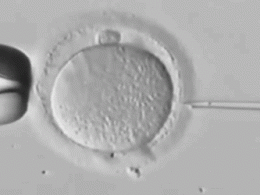The world we live in is filled with diverse and magnificent wildlife, but unfortunately, many of these species are threatened by human activities. Fortunately, innovative technologies have revolutionized the way we approach wildlife conservation efforts. From satellite tracking to DNA analysis, technological advancements have enabled us to better understand and protect endangered species like never before. In this blog post, we’ll explore some of the innovative technologies used in wildlife conservation and their impact on our planet’s precious biodiversity.
Wildlife Conservation Efforts in the Past
Wildlife conservation efforts have been around since the early 1900s when hunting laws were first enacted in the United States. These laws aimed to protect game animals from overhunting and extinction, but they didn’t address other factors that threatened wildlife populations.
In the later years of the century, organizations such as The World Wildlife Fund and Greenpeace emerged with a focus on protecting endangered species and their habitats. Conservationists also started using radio telemetry, which allowed them to track animal movements without disturbing them.
Despite these efforts, many species still faced extinction due to habitat loss, poaching, climate change, and other factors. Traditional conservation methods often fell short in addressing these complex issues until innovative technologies came into play.
Today’s cutting-edge technologies give scientists access to data that was previously impossible or difficult to obtain through traditional means. As a result, we can better understand wildlife behavior patterns and develop targeted conservation strategies for individual species based on their unique needs.
Innovative Technologies Used in Wildlife Conservation
Innovative technologies have transformed the way we approach wildlife conservation. One such technology is remote sensing, which uses satellite imagery to track changes in land use and identify areas where species are at risk. This information can then be used to develop conservation strategies that protect critical habitats.
Another technology that has revolutionized wildlife monitoring is camera traps. These devices capture images and videos of animals without disturbing their natural behavior, providing invaluable data on population size, movement patterns, and behavior. Camera traps have been particularly useful for studying elusive or nocturnal species.
DNA analysis has also proven to be a game-changer in wildlife conservation efforts. By analyzing DNA samples from feces, hair, or even air particles left by animals, scientists can accurately identify individual animals and track their movements over time. This information can help inform management decisions and prevent poaching.
Machine learning algorithms are being used to process vast amounts of data collected from these innovative technologies more quickly and accurately than humans ever could. This allows researchers to detect trends and patterns that may not have otherwise been apparent.
These innovative technologies offer tremendous potential for improving our understanding of wildlife populations and developing effective conservation strategies that protect them for future generations.
The Impact of Technology on Wildlife Conservation
There has been a significant impact of technology on wildlife conservation efforts. Innovative technologies have helped researchers and wildlife conservationists to monitor, protect and conserve various species in ways that were never possible before.
One major impact of technology is the use of drones which provide an aerial view for monitoring protected areas. Drones are equipped with cameras and sensors, making it easier to track animal movements, count populations or even gather data on habitat conditions without disturbing them.
Another technological advancement is the use of radio collars that track animal movement patterns or migration routes. With this information, researchers can better understand how animals interact with their environment and what habitats they require to thrive.
Moreover, satellite imagery has enabled tracking migratory species across large territories or identifying forest cover changes over time enabling authorities to identify illegal logging activities quickly.
Furthermore, innovative tools such as acoustic sensors allow scientists to detect sounds made by animals like birdsongs or amphibian calls which help them study population numbers at different times throughout the year.
These technological advancements have revolutionized how we approach wildlife conservation efforts providing better efficiency in data gathering resulting in more successful outcomes.
Conclusion
Technology has revolutionized the way we approach wildlife conservation. The use of drones, GPS tracking devices, and advanced monitoring systems have provided us with a more accurate understanding of animal behavior and habitat. With this knowledge, we can make informed decisions to protect endangered species and their ecosystems.
However, it is important to remember that technology alone cannot solve all our problems. It must be coupled with effective policies that encourage sustainable development practices and combat illegal wildlife trade.
As individuals, we also have a responsibility to support conservation efforts by reducing our carbon footprint and supporting ethical tourism practices.
By working together with innovative technologies and sustainable strategies, we can ensure the survival of some of the world’s most vulnerable species for generations to come.








